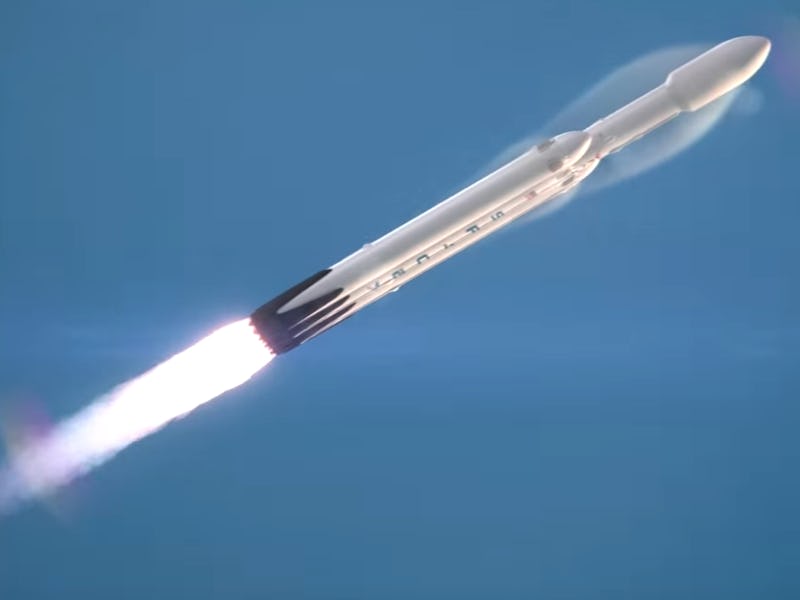SpaceX is taking two people to the moon — but they won’t get to touch it. After teasing a big announcement on Sunday night, SpaceX CEO Elon Musk told reporters on Monday that two private citizens had paid for a private trip to orbit around the moon in the Dragon 2 spacecraft, which will be launched into space on the top of the new Falcon Heavy rocket.
The mission will reportedly take two humans deeper into space than any human has gone before.
Musk said the mission will take about a week. This is the first announced crewed mission on the Dragon 2 spacecraft, which SpaceX hopes will become NASA’s go-to for ferrying government scientists to the International Space Station starting in 2019. But before that, those two private citizens — whose names have not been revealed — will test out the Dragon’s capabilities on a relatively long-distance flight to Luna and back.
Late 2018 is a vague timeline for the historic mission, but SpaceX’s official announcement has a few clues as to when preparation, training, and blast off for the mission will occur.
Here are five key dates for SpaceX’s moon mission:
1. Mid-Late 2017: SpaceX begins “health and fitness tests” for the two private individuals, as well as “initial training” on, presumably, how to operate critical systems in the Dragon 2. It’s unclear who the private flight team is or if either of its members have any experience in space.
2. Late 2017: Dragon 2 flies uncrewed demonstration mission to the ISS. The Dragon 2, or Crew Dragon, is the lynchpin of SpaceX’s plans to partner on NASA’s commercial crew program. The company says it will conduct an autonomous test launch of the spacecraft to the ISS “later this year.”
3. Second Quarter 2018: Dragon 2 flies crewed mission to the ISS. The two private astronauts won’t be the first people on the Dragon 2. According to Monday’s press release, SpaceX hopes to fly a crewed mission of two professional astronauts to the ISS, meaning that it is indeed on track for the schedule Musk alluded to in a tweet earlier this month.
4. Second or Third Quarter 2018 and after: Dragon 2 flies additional crewed and uncrewed missions to the ISS. If all goes well, SpaceX will fly four Dragon 2 missions to the ISS per year, starting in 2018. Three will be uncrewed supply missions like the ones the company’s Dragon 1 capsule has already accomplished, but one per year will carry crew.
5. Sometime after that, possibly late 2018: SpaceX sends two private citizens on a round-trip flight to the moon. The timeline on this is extremely fuzzy: SpaceX says that the private moon-ride will only take place “once operational Crew Dragon missions are underway for NASA,” which means that the private mission is dependent on the success of the prior government flights.
An artist's rendering of the inside of Crew Dragon.
Both SpaceX and Boeing, its competitor for government contracts on crew capsules, have weathered criticism from government investigators who were concerned that the companies’ respective crew-capable spaceflight programs wouldn’t be ready in time for planned missions to the ISS in 2019.
NASA is under the gun to find a new way to get to the ISS, as its contract with Ruscosmos expires on December 31, 2018. As it stands, the Russian Soyuz spacecraft is the only fully-vetted way to get human beings into orbit, and Ruscosmos has said it will not sign a new contract with NASA after 2018.
NASA can supplement its remaining trips on Soyuz by buying Boeing’s scalped tickets, but that’s barely a stopgap solution, and the space agency needs ULA and SpaceX to come through in a very short timeframe.
